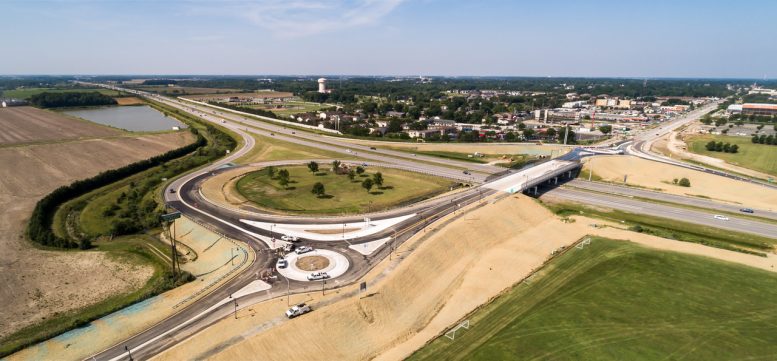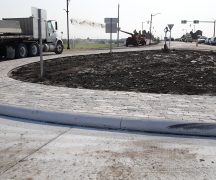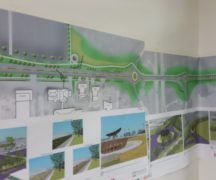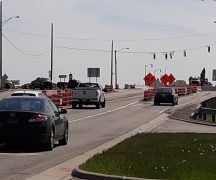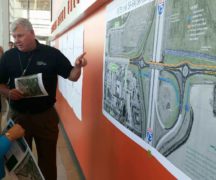By JAN LARSON McLAUGHLIN
BG Independent News
Bowling Green motorists are adapting to the first roundabouts in the city.
After being open to traffic for a week, no crashes – not even a little fender bender – have been reported at the roundabouts on East Wooster Street at the Interstate 75 interchange.
“People are getting used to them,” Bowling Green Police Lt. Dan Mancuso said on Friday.
A review of accident reports for the week showed nothing at the roundabouts, according to Mancuso.
“Knock on wood,” he said.
Bowling Green has tried to make it easier for novices to navigate the roundabouts. The city’s website has information on how to use roundabouts, complete with a video tutorial.
“I recommend people go to the website,” Bowling Green Assistant Municipal Administrator Joe Fawcett said. “I think once people get comfortable, they will appreciate them.”
Comments from the public on Facebook are mostly positive about the roundabouts. Some poke fun at motorists for their driving skills.
“Dear God.. people in BG haven’t learned 4 way stops yet … how the hell is this gonna work?” one person wrote.
Another revived a classic scene from the “European Vacation” movie, when Clark Griswold got stuck circling a London roundabout. “Look kids, Big Ben, Parliament…..flash forward two hours…can’t get out of this roundabout…look kids, Big Ben, Parliament…”
But lucky for Bowling Green, the East Wooster Street roundabouts are single lanes, which reduce the confusion for motorists.
The city website explains the main rule for roundabouts.
“The most important thing to keep in mind for the driver is to look left. The intersection is a ‘yield at entry’ and not a stop, so if there is no oncoming traffic from the left, a driver may proceed.”
So look to your left as you near the entrance to the roundabout. Yield to traffic already in the roundabout. Once you see a gap in traffic, enter the circle and proceed to your exit. If there is no traffic in the roundabout, you may enter without yielding.
The roundabouts were designed for all sizes of vehicles. Each roundabout has a “truck apron” incorporated into the design. The truck apron is the area between the central island and the roadway that is mountable by larger vehicles but not used by passenger vehicles, the website states.
For more information or to watch informational videos, visit https://www.bgohio.org/
ROUNDABOUTS
- How are roundabouts safer?
Roundabouts are designed to be safer and more efficient than a traditional intersection. The design of the roundabout creates a low speed (20-30 mph) environment and prevents high angle crashes such as “T-bone” crashes. Low angle, low speed crashes tend to be less severe than higher angle, high speed crashes. – Reference: ODOT
- Are roundabouts really more efficient?
Yes. Vehicles are able to move more quickly through the intersection because of the “yield at entry” – drivers only have to watch for traffic from the left, and if there is an adequate gap available, they can enter the intersection without stopping. Once in the roundabout, drivers have the right-of-way, so they will not have to stop or yield to exit. If the driver does need to yield at entry to traffic inside the roundabout, their delays are brief and typically less than the time they would have been delayed at a traffic signal. – Reference: ODOT
- How does the design compensate for large vehicles such as semi trucks?
Incorporated into the design of roundabouts is something called a “truck apron.” The truck apron is the area between the central island and the roadway that is mountable by larger vehicles but not used by passenger vehicles. Typically this area is concrete versus the roadway which is asphalt. – Reference: ODOT
- How much safer are roundabouts?
According to the U.S. Department of Transportation Federal Highway Administration, roundabouts reduce the types of crashes where people are seriously hurt or killed by 78-82 percent when compared to conventional stop-controlled and signalized intersections, per the AASHTO Highway Safety Manual. – Reference: USDOT

